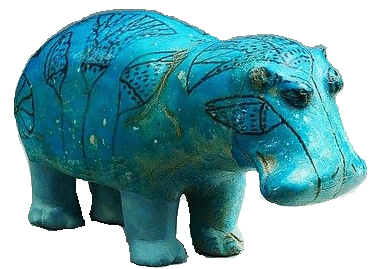
10/16 ヘーゲル「精神現象学」1807:はじめに
10/16 Einleitung,
Phänomenologie des Geistes, 1807

☆ ★このページはヘーゲル「精神現象学」の序文の後につづく「はじめに」の部分です。 INTRODUCTION, The Phenomenology of Mind (Einleitung, Phänomenologie des Geistes) ヘーゲル「精神現象学」の一般的解説は「ヘーゲル『精神現象学』1807ノート」を、参照してくだ さい。課題書とテキストについては「G.W.F.ヘーゲル『精神現象 学』1807年への入門」を参照してください。
☆
| Dieser
Widerspruch und seine Wegräumung wird sich bestimmter ergeben, wenn
zuerst an die abstrakten Bestimmungen des Wissens und der Wahrheit
erinnert wird, wie sie an dem Bewußtsein vorkommen. Dieses
unterscheidet nämlich etwas von sich, worauf es sich zugleich bezieht;
oder wie dies ausgedrückt wird, es ist etwas für dasselbe; und die
bestimmte Seite dieses Beziehens, oder des Seins von etwas für ein
Bewußtsein ist das Wissen. Von diesem Sein für ein anderes
unterscheiden wir aber das An-sich-sein; das auf das Wissen bezogene
wird ebenso von ihm unterschieden, und gesetzt als seiend auch außer
dieser Beziehung; die Seite dieses An-sich heißt Wahrheit. Was
eigentlich an diesen Bestimmungen sei, geht uns weiter hier nichts an,
denn indem das erscheinende Wissen unser Gegenstand ist, so werden auch
zunächst seine Bestimmungen aufgenommen, wie sie sich unmittelbar
darbieten; und so, wie sie gefaßt worden sind, ist es wohl, daß sie
sich darbieten. |
【10】
この矛盾とその解消は、まず、意識において現れる知識と真実の抽象的な
規定を想起することで、より明確になるだろう。なぜなら、それは、それ自体が指し示すものから何かを区別しているから。あるいは、別の表現で言えば、それ
は同じもののためにあるものなのだ。そして、この関係、あるいは意識にとって何かであることの特定の側面が、知識である。しかし、私たち
は、この「あるも のにとってある」ことから、「それ自体である」ことを区別する。知識に関連するもの
も、同様に区別され、この関係の外にも存在するとされる。この「それ自
体である」という側面は、真実と呼ばれる。これらの規定が実際に何であるかは、ここでは問題ではない。なぜなら、現れている知識が私たちの対象である以
上、その規定も、まず、直接的に現れているとおりに受け入れるべきであり、それらが把握されたとおりに、それらが現れているのは当然のことだからだ。 |
☆
★ ハイデガーのコメンタリー
(10/16)
ハイデガー「ヘーゲルにおける経験概念」:ヘーゲル「精神現象学」はじめに第10節の解説
☆
| ・自然的な認識観の考察をつづけてゆくようす
をみると、彼は叙述の本質における矛盾的なものを論理的な論法で調停したり除去したりしない(142) |
|
| THE TENTH SECTION continues the reflection in a way
which shows that Hegel does not smooth over and remove
the contradictions in the nature of the presentation by
means of logical arguments. The seemingly irreconcilable
does not lie in the nature of the presentation. It lies in the
inadequate manner in which we, who keep on being dominated
by the mode of representation that belongs to natural
consciousness, see the presentation. The presentation aims
at the appearance of knowledge. The presentation, too, is
a kind of knowledge. Both fall within the same consciousness.
If the question concerning the standard and the examination
can take hold anywhere at all, it can tum only
to consciousness to get its answer. Is consciousness, qua
consciousness, itself something like a measure and a standard?
Is consciousness as such, inherently, an examining
activity? Here, consciousness itself comes more clearly under
essential scrutiny. Still, it does not yet become apparent
which fundamental trait in the nature of consciousness is
the aim of this reflection.
Just as though nothing had been said so far about consciousness,
Hegel here begins with a reference to two determinations
"as they exist in consciousness." He calls them
knowledge and truth .. They are called "abstract determinations,"
since they are the result of a scrutiny of consciousness
which disregards the full nature, and the unity, of the
constitution of consciousness. Consciousness is understood
here as it shows itself immediately-which always means
onesidedly-to natural representation.
Consciousness means being conscious of something; that
something is in the state of being known. But what is known
exists in knowledge, and exists as knowledge. What is known
is that to which consciousness relates in the mode of knowing.
What stands in this relation is what is known. It is in
that it is "for" consciousness. What so is, is in the mode of
"being for .... " But "being for" is a mode of knowing. In
this mode something is "for consciousness" from which it is
"at the same time distinguished" insofar as it is known.
But in general what is known is not merely represented in
knowing; rather, the representing intends that which is
known as something r~l that is in itself, hence, something
that truly is. This being-in-itself of what is known is called
truth. Truth, too, is one thing ( something represented) and
at the same time another (something that is in itself) "for
the same consciousness." The two determinations of consciousness,
knowledge and truth, are distinguished as "being
for" and "being-in-itself." Hegel merely directs our attention to these two determinations, without going into the
question "exactly what might be involved in these determinations."
Yet, unbeknown to us although on purpose,
Hegel has here pointed out a basic property of consciousness.
The opening sentences of this section even name it in
passing.
What I am conscious of is different from consciousness
and distinguished by it. As itself and by virtue of itself, it is
the relation of something to something else. However, that
which is distinguished in this distinction ( the object for the
subject in the subject) remains related to that which distinguishes
precisely by virtue of the distinction. In representing,
consciousness separates something from itself in
such a way that it relates it to itself. Consciousness in itself
makes distinctions that are no distinctions. In this sense, consciousness
is ambiguous in its nature. That ambiguity is the
nature of representation. Because of it, the two determinations-
knowledge and truth, "being for" and "being-in-itself"
-occur everywhere immediately in consciousness, in
such a way that they themselves are ambiguous.
Seen in the light of the two determinations, what, then,
is the presentation which, as representation, remains itself
a mode of consciousness? It represents phenomena in their
appearance. It investigates knowledge regarding its truth.
It examines knowledge for its truth. It moves within the
distinguishing activity of the distinction as which consciousness
itself is. In view of the distinction, a prospect thus
opens on the essential possibility that the presentation receives
its standard, and its character of being an examination,
from that in which it moves. The prospect grows
clearer as soon as it becomes evident what the measuring
examination, seen from the viewpoint of consciousness itself,
is aiming at.
|
第10節は、ヘーゲルが論理的議論
によって表現の性質における矛盾を滑らかにし、除去するわけではないことを示す形で考察を継続している。一見調和不可能なものは、表現の性質にあるのでは
ない。それは、自然意識に属する表象の様式に支配され続ける私たちが、表現を見る不十分な方法にあるのだ。表象は知識の出現を目的としている。表象もまた
一種の知識である。両者は同じ意識の中に含まれている。基準と検証に関する問題がどこかで提起されるなら、その答えは意識にしか求められない。意識は、意
識として、それ自体で何らかの尺度や基準のようなものなのか?意識そのものは、本質的に検証活動なのか?ここで、意識そのものが本質的な検証の対象として
より明確に浮上してくる。それでも、意識の本質的な性質のうち、この考察の目的となる根本的な特性がまだ明らかになっていない。ヘーゲルは、これまで意識
について何も言及していないかのように、意識の中に存在する二つの決定から始める。彼はそれらを「知識」と「真実」と呼ぶ。これらは「抽象的決定」と呼ば
れるのは、意識の構成の全体性と統一性を無視した意識の検討の結果だからだ。意識は、自然表象に対して即座に——つまり常に一方的に——現れるものとして
理解される。意識とは、何かを意識することだ。その何かは、知られている状態にある。しかし、知られているものは知識の中に存在し、知識として存在する。
知られているものは、意識が知覚のモードで関係する対象だ。この関係にあるものが知られているものだ。それは「意識にとって」である点で存在する。そうで
あるものは、「…であること」のモードにある。しかし、「…であること」は知覚のモードだ。このモードにおいて、何かは「意識のために」存在し、同時に、
それが知られている限りにおいて「意識から区別される」。しかし、一般に、知られているものは、単に知覚において表象されるだけではない。むしろ、表象
は、知られているものを、それ自体として存在するもの、すなわち真に存在するものとして意図する。知られているもののこの「それ自体としての存在」が真実
と呼ばれる。真実もまた、一つのもの(表象されたもの)であり、同時に別のもの(それ自体として存在するもの)として「同じ意識にとって」存在する。意識
の二つの決定、知識と真実は、「~のためにある」と「それ自体としてある」として区別される。ヘーゲルは、これらの二つの決定に注意を向けるだけで、これ
らの決定に「具体的に何が含まれるのか」という問題には触れていない。しかし、ヘーゲルは、意図的に私たちには知られないように、ここで意識の基本的な特
性を指摘している。この節の冒頭の文では、その特性をさりげなく表現している。私が意識しているものは、意識とは異なっており、意識によって区別される。
それ自体として、そしてそれ自体によって、それは何かと何かとの関係である。しかし、この区別によって区別されるもの(主体における主体の対象)は、その
区別によって区別されるものとの関連性を維持している。表現において、意識は、あるものをそれ自体から分離すると同時に、それ自体と関連付ける。意識は、
それ自体、区別ではない区別を行う。この意味で、意識はその性質において曖昧である。その曖昧さが表象の性質だ。そのために、知識と真実、存在のための存
在と自己存在という二つの決定は、意識の至る所で即座に現れ、それ自体が曖昧なものとなる。二つの決定の光に照らして、表象として自己のままである表象と
は何なのか?それは現象の出現を表現する。それは知識の真実性について調査する。それは、知識の真実性を検証する。それは、意識そのものが区別として存在
する区別の活動の中で動く。区別という観点から、提示が、それが動くものからその基準と検証としての性格を受けるという本質的な可能性への展望が開ける。
その展望は、意識自身から見た測定的検証が何を目的としているかが明らかになるにつれて、より明確になる。 |
リ ンク
文 献
そ の他の情報
cc
Copyleft, CC, Mitzub'ixi Quq Chi'j, 1996-2099
☆
 ☆
☆